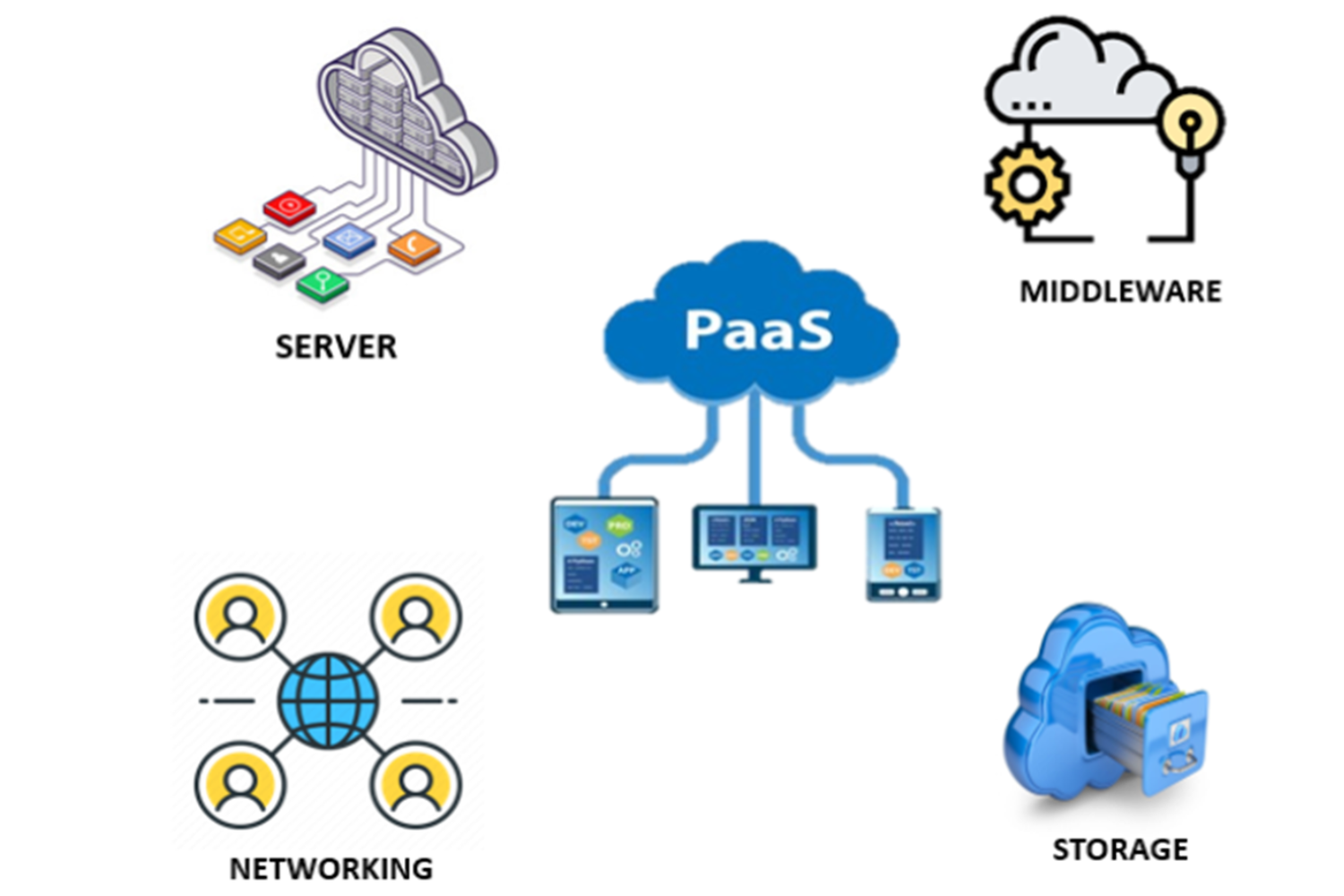
AZURE PaaS
PaaS- Platform as a Service in Azure
PaaS stands for “Platform as a Service.” A Platform as a Service is a development environment in Azure, appropriate for creating both basic and sophisticated cloud applications. It offers the tools required for this. The following resources may be among them:
Servers
Storage
Networking

Middleware (this provides the communication between the client and application), the tools to manage it, etc

Benefits of PaaS
1.Cut coding time: With pre-coded application components like workflow, directory services, security features, search, and so forth integrated into the platform, PaaS development tools can reduce the time it takes to code new apps.
2.Add development capabilities without adding staff: Platform on Demand Components can add new capabilities to our development team without requiring us to hire more employees with the necessary training.
3.Develop for multiple platforms: Cross-platform app development is made faster and simpler by certain service providers who offer development options for a variety of platforms, including computers, mobile devices, and browsers.
4.Use sophisticated tools affordably: Businesses and individuals who could not afford to buy expensive business intelligence and analytics tools or sophisticated development software can now use them thanks to pay-as-you-go models.
5.Support geographically distributed development teams: Development teams can collaborate on projects even when team members are spread out across different locations, as the development environment can be accessed via the Internet.
6.Efficiently manage the application lifecycle: Building, testing, deploying, managing, and updating web applications all fall under the purview of PaaS, which offers all the necessary tools for the job in a single, integrated environment.
PaaS Disaster recovery
Azure PaaS redundancy assurance safeguard our database from irreversible loss in the case of a significant calamity. As a business person or corporate administrator, we need a platform that allows us to create, implement, and manage the utility; PaaS is ideal for these kinds of tasks. It offers a platform that developers can use to manage apps without having to worry about complicated app infrastructure maintenance. The majority of businesses favour Microsoft Azure PaaS.

It keeps important data, and any loss would be unaffordable. Therefore, to secure our PaaS database, we should use the PaaS Azure disaster recovery plan template.

Azure Disaster Recovery Scenarios
The PaaS disaster may be caused by a number of factors. It should be known by the administrator so that data recovery can be completed quickly in the case of an emergency. Failures affecting the entire application are not solely caused by service interruptions across the region. Errors in administration and poor design can also result in an outage.
Application Failure: Data integrity problems or faulty logic can lead to catastrophic exceptions, which can result in application errors. Fixing critical errors is simple if the administrator is fully conversant with Azure PaaS disaster recovery procedures.
Data Corruption: Data is automatically stored by Microsoft Azure on an Azure SQL Database, and it is stored three times in separate fault domains within the same region. Users who utilise geo-replication will have three additional locations for data storage. Multiple copies are the source of corrupt data because they quickly replace the original copy if it becomes corrupted.
Network Outage: In the event that networks cannot access data, data may become inaccessible. You must create a PaaS disaster recovery template that will allow our apps to function with less functionality if a network outage prevents us from accessing our data in PaaS.
Region-Wide Service Disruption: Administrators need to get ready for a regional service outage. The local copies of the data are missed in the case of a regional disruption of service. If you have geo-replication, you can get the data back. Azure remaps all DNS entries to the geo-replicated region as soon as Microsoft declares the region lost.
Azure-Wide Service Disruption: The whole spectrum of potential disasters must be taken into account when designing the disaster recovery solution. It’s possible that the disaster affects the entire region. You have to get ready beforehand for that. Make a backup of your PaaS database so you can access your information in the event of a major disaster.
Examples of Azure PaaS services
Azure offers a wide range of PaaS services that cater to different application needs. Some popular examples of Azure PaaS services are:
1)Azure App Service: It allows us to build, deploy, and scale web and mobile applications using various programming languages like .NET, Java, Node.js, and more.
2)Azure SQL: It’s a fully managed relational database service that provides high availability, automatic backups, and scalability for your applications.

3)Azure Cosmos DB: It’s a globally distributed, multi-model database service that supports various NoSQL data models like document, key-value, graph, and columnar. It’s perfect for building highly scalable and responsive applications.
4) Azure CDN: It offers developers a global solution for rapidly delivering high-bandwidth content to users by caching their content at strategically placed physical nodes across the world.
5)Azure Search: It enables indexing and querying of data which has been uploaded to Microsoft servers.
Jobs Roles
1. PaaS developer
2. Frontend Developer
3. Azure Cloud Developer
4. Azure iPaaS Developer
5. Senior Azure PaaS Developer
6. Sales CRM Developer
7. Azure DevOps Developer

8. Azure API Developer
9. Data Engineer
10. Azure Integration Developer
11. Senior AI Developer
Salary Expected
The salary for PaaS in India ranges between 13 lakhs to 35 lakh Per Annum
Course Highlights
1- Suited for students, fresher’s, professionals, and corporate employees
2- Live online classes
3- 4-month program
4- Certificate of completion
5- Decision Oriented Program of Analysis
6- Live Classes by highly experienced faculties
7- Hands-on experience with real-life case studies

Conclusion
PaaS in Azure provides a convenient and efficient way to develop, deploy, and manage applications. With Azure’s PaaS offerings, we can focus on writing our application code while Azure takes care of the underlying infrastructure, such as servers, networking, and storage. This allows us to accelerate development, reduce operational overhead, and scale our applications easily. Whether we’re building web and mobile apps, leveraging serverless computing, managing data, integrating services, implementing AI and machine learning, or working with IoT devices, Azure offers a wide range of PaaS services to meet your specific needs. It’s a powerful platform that simplifies application development and enables us to bring our ideas to life.

